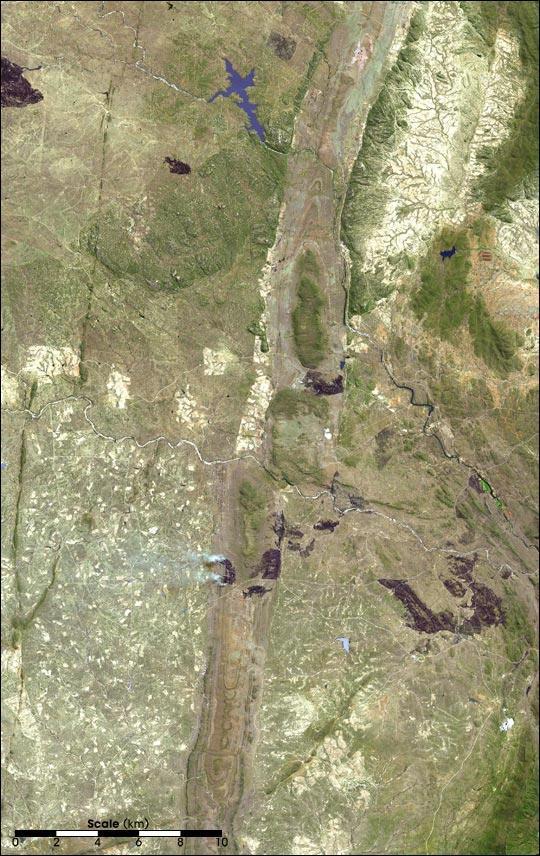The Great Dyke #

Over the millennia, the cratons comprising Earths landscapes were transported, twisted, folded, eroded, and split by the tremendous geological forces continually reshaping our worlds land surfaces. Zimbabwes Great Dyke, running vertically through the center of this scene, probably formed slowly over centuries, as molten rock forced its way up from the Earths interior through the Zimbabwe Craton.
The dyke stretches about 530 km (330 mi) across the craton and varies from between 3 and 12 km (2 and 7 mi) wide long its length. The dyke is extremely rich in platinum and chromium deposits that support the Zimbabwe economy. This simulated natural color image covers an area of 62 x 39 km (39 x 24 mi).
Several burn scars (reddish-brown patches) bruise the landscape in this scene, including the aftermath of a fire that is still burning atop the dyke in this scene. The twin plumes of gray smoke billowing westward mark the location of the fire, situated toward the bottom center of the image.